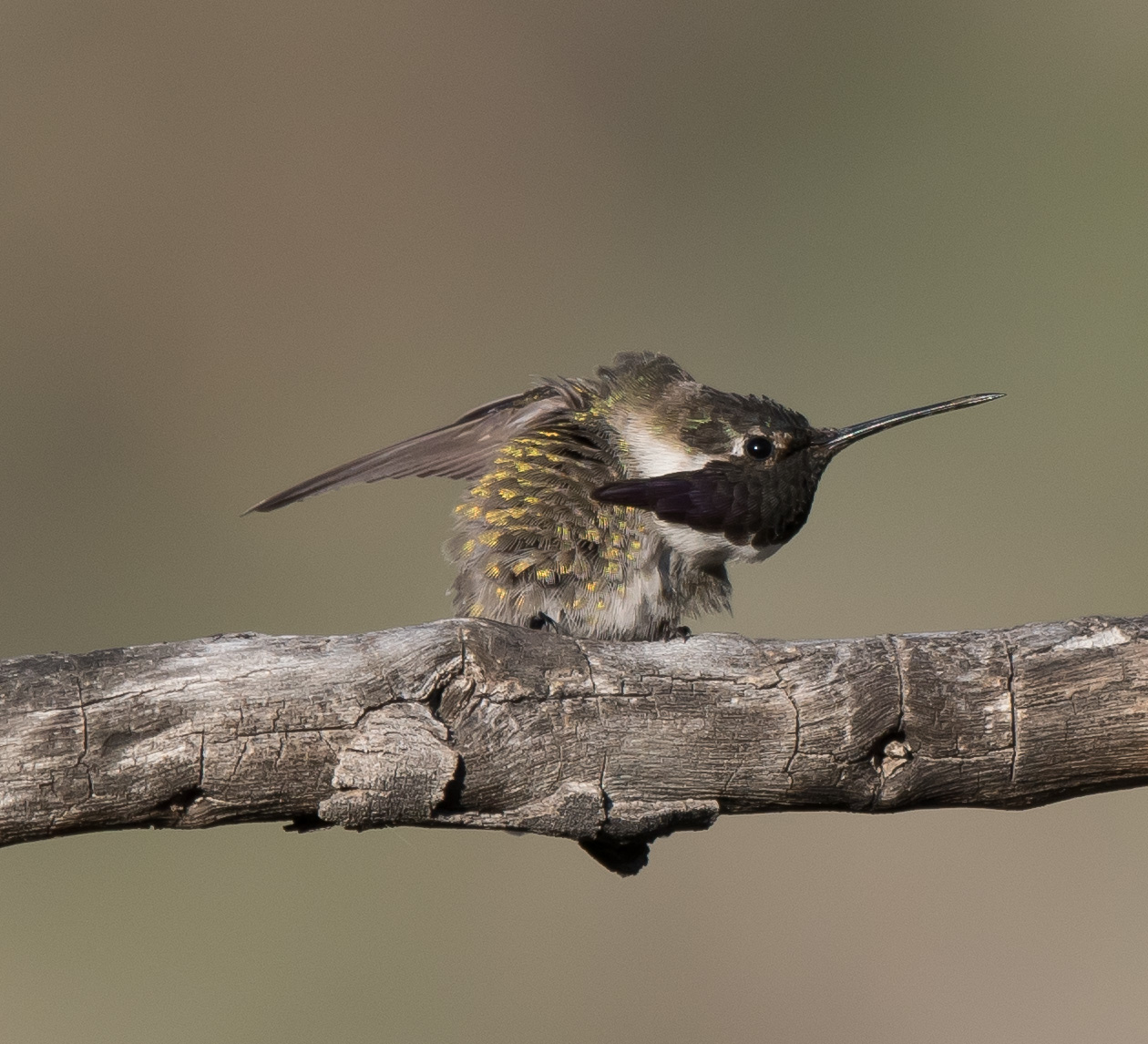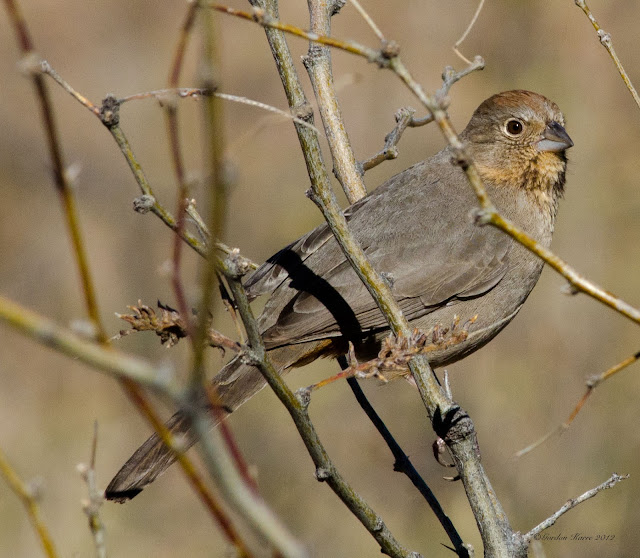On Wednesday, 26 Dec, I took part in the Superior CBC (Christmas Bird Count) and was assigned to area 4 which included the Oak Flats Campground. Thanks to our great team leader, Cynthia, along with Grant, Tyler, Ellen and Vic, we had a great day. Since the focus of this excursion was about 'counting' birds, I spent much less time photographing birds. (Also to add to that, I had a minor malfunction with my photography gear, teleconverter was out of commission, which really hindered the photography portion during this all day event.)
Probably the funnest and cutest bird that day was a Bridled Titmouse. These little birds make their appearance in the United States in Arizona and New Mexico. And like many very small birds, they are very active in gleaning insects from the foliage of trees. Had one spend some time in the sun for me and allowed me to capture some photos of it in various poses.
Bridled Titmouse
Bridled Titmouse
Bridled Titmouse
Bridled Titmouse
Another unique bird that is not as common as the Curve-billed Thrasher is the Crissal Thrasher, another bird of the American Southwest. It has a long, slender curved bill that almost appears like a lethal weapon. This bird is known for its rich chestnut colored undertail patch, which is unlike other thrashers. Most thrashers are great singers and this one was not an exception, singing from the top of a small shrub.
Crissal Thrasher
Crissal Thrasher
Other birds found at Oak Flats CG, were the Canyon Towhee, Northern Cardinal, and Dark-eyed Juncos.
Canyon Towhee
Northern Cardinal-male
Dark-eyed Junco
Late in the afternoon, we all met at Boyce Thompson Arboretum for a wrap-up of our counts. I also used the bit of free time to capture a couple other photos. Had to capture an equally beautiful female Northern Cardinal as well since I already had the male from earlier in the day. After having counted endless numbers of White-crowned Sparrows, I figured a photo or two of them might be nice. And I found the lingering White-winged Dove at BTA that must have decided to spend its winter a bit further north than usual.
Northern Cardinal-female
White-crowned Sparrow-juvenile
White-crowned Sparrow-adult
White-winged Dove


















































